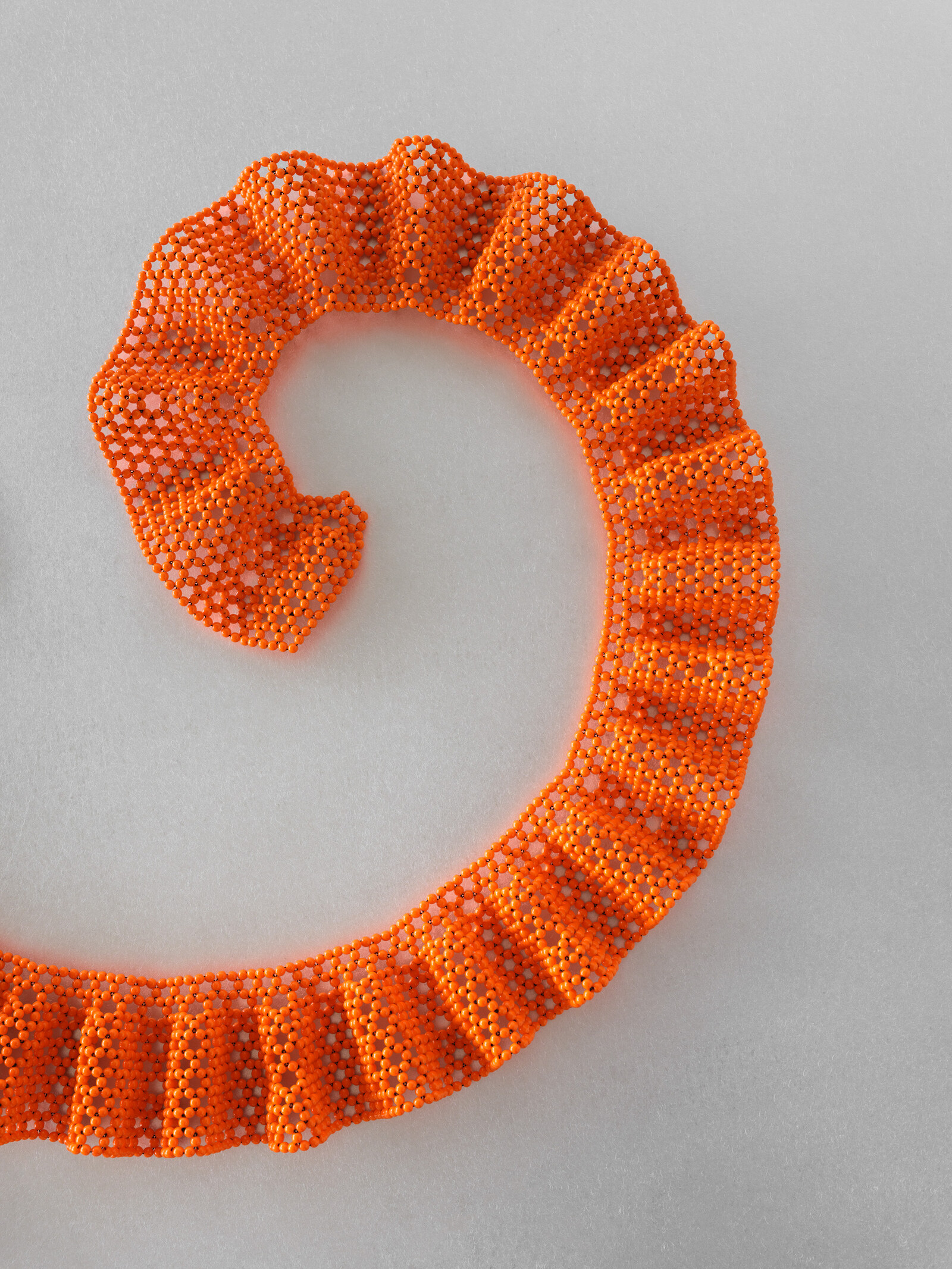TIDE
July 15, 2023–January 14, 2024
Friedrichsplatz 18
34117 Kassel
Germany
Hours: Tuesday–Sunday 11am–6pm,
Thursday 11am–8pm
info@fridericianum.org
Curatorial team: Luise von Nobbe & Moritz Wesseler
Under the heading TIDE, the Fridericianum presents Tauba Auerbach’s first solo exhibition in Germany.
Auerbach, born in 1981 in San Francisco and now living in New York, traces the visible and invisible connections, structures, and rhythms that shape our universe. In addition, Auerbach orients their artistic gaze toward the micro- and macrocosmic that constitute the complexity of being. To do this, the artist explores various scientific disciplines, such as mathematics, physics, anatomy, linguistics, and philosophy, whose rules and methods are often adopted in an unconventional manner. A special focus of interest lies in those areas that cannot be clearly measured, ascribed, or explained.
Auerbach’s works, featuring paintings, drawings, weavings, films, artist’s books, typography, and sculptures, can be seen as sensitive expressions of this artistic research. They are, on the one hand, characterized by an innovative and, in some cases, unusual aesthetic and language of form and, on the other, by remarkable versatility. Both lead to Auerbach’s commanding position in contemporary art discourse. The artist’s production processes are determined by a number of different factors, such as constant experimentation, the continual acquisition and practice of craft techniques such as marbling or glass fusing (a process used for the lasting fusing of different glass pieces), the use of custom-made tools, and serial production. Aside from these diverse methods, the appearance and impact of the works are also characterized by an interplay between abstraction and figuration. This can be seen as a vehicle used by Auerbach to jolt our customary perceptual capabilities, such as when scale or legibility is called into question.
On the basis of over one hundred works, the show at the Fridericianum offers audiences the opportunity to become widely acquainted with the thoughts, questions, and objectives of the artist as well as the practice that has grown out of them. The presentation in Kassel promotes a heightened awareness of the dualities that are so pivotal for Auerbach. Reflecting the Fridericianum’s architectural symmetry, the show juxtaposes works that have different relationships to one another. In the northwestern part of the building, the Foam paintings (2023) and Org sculptures (2023) are linked through a common reference to “particles,” while in the southeastern part of the building, the Heat Current wallpapers (2023) and Extended Object paintings (2018–23) are connected by a shared association with “waves.” On closer inspection, however, the works also display links to each other’s properties—an allusion to quantum physics. The artist uses such phenomena, to facilitate new perspectives on our world and its nature.
Auerbach’s creativity thus acts like a continual reflection on our existence. However, it is not aimed at delivering explanations. Instead, manifesting in the works are approaches to those countless facets of the cosmos that open up great potential for a questioning of conventional logic and for poetry.
Auerbach has enjoyed widely acclaimed exhibitions at the San Francisco Museum of Modern Art (2021), the Artist’s Institute at Hunter College in New York (2019), the Museum of Contemporary Art in Cleveland (2018), the Stevenson Library at Bard College in Annandale-on-Hudson (2017), the Institute of Contemporary Arts in London (2014), WIELS Contemporary Art Center in Brussels (2013), Malmö Konsthall (2012), and Bergen Kunsthall (2011). In addition, their work has been exhibited in numerous two-person and group exhibitions, including at the Clark Art Institute in Williamstown (with Yuji Agematsu, 2022), the Museum of Contemporary Art, Cleveland (with Éliane Radigue, 2018), Indipendenza Studio in Rome (with Charlotte Posenenske, 2015), the Museum of Modern Art in New York (2012), MoMA PS1 in New York (2010), the Whitney Museum of American Art in New York (2010), or the New Museum in New York (2009).




